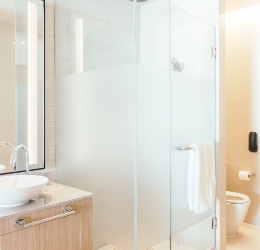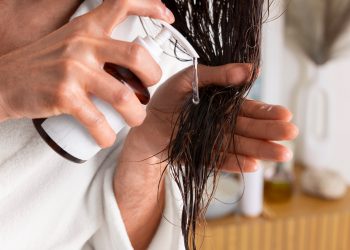Sometimes you can spot signs of water damage inside a house. Brownish-yellow water stains are one of the first indications there’s a leak. Swollen drywall, rotted wood, and peeling paint also point to water damage.
But spotting water damage isn’t the same as detecting a water leak. Sometimes the leak may not originate where the deterioration manifests. It could be that there are no visible signs you have a water leak.
Leaking water pipes can cost hundreds of dollars, especially hidden ones. We’ve seven tips to help you find leaking water in your house. Keep reading to protect your home from damage.
1. Keep A Close Eye on Your Surroundings
Watching your house is perhaps the simplest way to detect water leaks. We discussed water stains, rotting wood, and peeling paint as signs you have a leak. But what are other clues that you have water entering your home?
Bulging walls offer other visual cues you may have water inside your house. A bubble inside your wallpaper is a clear sign your home is leaky. A bulging wallboard means you have plenty of water damage and need a replacement.
You know there’s a water leak somewhere if your walls are damp but haven’t been exposed to the outdoors. Musty smells, roof damage, and mold may also point to water exposure.
It’s a good idea to listen out for dripping sounds and running water. You should never hear dripping in areas that are supposed to be dry. The same can be said for running water.
But What Causes Water Leaks?
All leaks don’t come from broken water pipes; all water damage isn’t because of leaks. For example, your roof leak could come from previous storm damage.
Damp, mildewy bathroom walls could be from a lack of greenboard. Windows are also a prominent source of leaks. Don’t expect that all your water damage will come from burst pipes, and address it as soon as possible.
2. Look Out For Greener Grass
Ideally, you’ll have a lawn full of green grass and a leak-free house. However, the reality isn’t always that kind. One helpful way to spot a leak is if you have a random, fast-growing green patch of grass in your yard.
This small oasis could prove vital in detecting a water leak – perhaps the lush patch results from a broken line. A bad enough leak can create puddles in your yard.
3. Watch Your Water Bill
Your water bill should stay relatively the same throughout the year. Your utility bills charge for the service and usage. For example, you pay for electricity, but you also pay for how much you use per month.
A suddenly increased bill (without increased water usage) could point to a constantly running water source on your property. Checking the water bill is an excellent way to spot leaks if there are no visible signs of one.
4. Check Your Water Meter
If you think you have leaking water pipes but aren’t sure, check your water meter. The water meter is either under a smallish manhole cover near the street or at the side (or back) of your house near the water supply line.
Here is what you should do to monitor your water usage with the meter:
- Shut off all sources of running water
- Like faucets, washing machines, and dishwashers
- Check the meter and record the numbers, then check again in an hour
- If the numbers have changed once you’re back, you have a leak
- Turn off the main shut-off valve to check if the leak is in or outside
- The valve is either in the basement or utility room
- Note that this step is only for homes with street meters
- Check the meter, write the numbers down and check again in an hour
- If the numbers stay the same, the leak is inside
- If the numbers change, the leak is from a buried water line
Call a plumber immediately once you’ve found the leak. The outside leak may fall under your water company’s purview. You could have the water company inspect and fix a water leak if it happened due to their negligence.
5. Inspect Your Appliances
Inspecting your appliances for leaks is good practice. Consider checking them regardless of whether you see signs of water damage or if the meter indicates a leak.
Inspect under your sink cabinets, around washing machines, and dishwashers. Watch for water near your tub, shower, refrigerator, toilet, and water heater.
If you find puddles, shut off the water supply valve to the appliance and call a plumber.
6. Dye Test Your Toilet
You may not be shocked to learn toilets are a prime source of leaks. The flapper (a rubber stopper that keeps water out of the bowl until you flush) gets worn and brittle.
Once that happens, water starts to leak from the tank and inside the bowl. Put a few drops of food coloring inside the tank, and you’ll see the colored water flow into the toilet bowl past the flapper.
Adding a new stopper isn’t too tricky if you’ve got decent DIY skills. However, there’s no problem calling a plumber if you’re not confident you can replace the toilet flapper.
7. Test Your Water Pressure
People living away from the city often experience low-pressure water. This is because they’re using underground wells as water sources.
If you live in the city or are connected to city lines and notice your water pressure is lower than usual, you might have a leak somewhere. Detecting a water leak via water pressure takes a bit of effort but is relatively simple.
All you need to do is turn off all the faucets and measure the pressure with a pressure gauge. The average water pressure is about 40 to 70 psi. Anything lower than that could indicate leaking water pipes.
Having Trouble Detecting a Water Leak?
Hopefully, one of these seven tips makes detecting a water leak easier for you and other readers. You must fix a water leak before it gets too bad. You could risk enormous damage to your home if you wait too long.
If you need competent plumbers out to your house, contact Home Team Plumbing. We service the following areas throughout Florida:
- Clearwater
- St. Petersburg
- Largo
- Oldsmar
- Dunedin
- Safety Harbor
- All of Pinellas County
Home Team Plumbing has existed for over a decade experience and offers 24-hour commercial and residential plumbing solutions.









